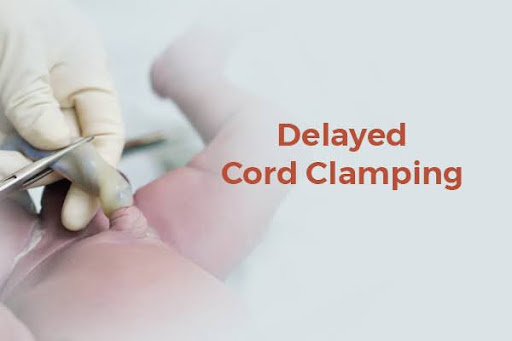

Like every parent, are you worried too about your baby’s immunity and overall health? Imagine giving your newborn a healthier start with just a few extra minutes – delayed cord clamping does just that! Want to gain more insights about the same? Read the article further and delve deeper into understanding this term and its associated risks and benefits.
Also, learn about another simple way to secure your baby’s future health. How? Do it right with LifeCell community stem cell banking.
Delayed cord clamping is when doctors wait 1-3 minutes after birth, or until umbilical cord pulsations cease, before clamping it. This practice benefits both preterm and full-term babies, as the extra time allows more blood to flow from the placenta to the baby.
It facilitates placental transfusion – the process of transferring the blood from the placenta to the newborn. This enables the transfer of ample iron reserves for the first 6-8 months after birth, thereby helping prevent or postpone the risk of iron deficiency (anaemia).
Delayed cord clamping also aids in decreasing the rate of haemorrhage (loss of blood from a damaged blood vessel), thereby increasing the oxygen flow in the brain and lungs to prevent a lack of blood supply. It thus enhances the stability of the heart and the blood vessels in the newborn baby.
This procedure promotes brain development and functioning for up to four years of age by preventing iron deficiency. As per a study, babies who receive delayed cord clamping at birth have high myelin levels. It’s a brain-insulating material that controls motor, visual, and sensory functions.
It leads to a less blood-filled placenta, which in turn reduces the incidence of retained placenta after delivery and helps in the active management of the third stage of labour.
Few studies have shown that there is a 4.36% risk of jaundice or yellowing of eyes and skin in babies who have delayed cord clamping. Higher levels of bilirubin were reported in those babies which can cause permanent damage to the brain known as kernicterus causing cerebral palsy (inability to move or maintain balance and posture) or hearing loss. On the other hand, only a 2.74% risk of jaundice was reported in babies with early cord clamping.
Some may worry about umbilical cord infections. However, hygiene plays a significant part. If everything is done correctly following the hygiene protocols, then you’re safe from infections.
We hope this blog has given you enough insights on delayed cord clamping and its benefits. Dear parents, let’s take this chance and give your tiny munchkins a stronger start in life. Understanding the significance of this practice can assist you all in making informed decisions during childbirth.
Another important decision that you, as a parent-to-be can make is opting for LifeCell Stem Cell Banking. This is once-in-a-lifetime opportunity that can protect your baby as well as your entire family against 80+ medical diseases. You can also consult your healthcare provider to understand more about stem cell banking and how it can benefit your baby and entire family.
For more details, visit www.lifecell.in/ or call 1800-266-5533
.
Have you ever wondered why online slot games have captured the hearts of millions worldwide? …
Slot games have long been one of the most popular attractions in both land-based and…
Do you know that adding fruits to your daily diet can improve various sperm parameters,…
Understanding the Basics of Budgeting Creating a budget is a fundamental step in managing your…
Are you a soccer fancier eager to overhear the action mechanism as Germany hold up…
In today 's fast-paced digital cosmos, sail the eCareer landscape feature suit substantive for person…
This website uses cookies.